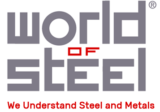Problem with Drawing 2-Piece Lacquered Can
I am having a problem drawing the two piece Cans?
Before you get to this stage, it is important to proactively work on what can go wrong. Did you order ASTM or JIS Standards. Remember the tolerances can differ in standards.
Second remember two piece cans are different from three piece cans. Steel chemistry, tolerances, lacquering everything is more stringent.
Let’s start with chemistry. It is better to order from a mill that guarantees purity of the steel from its feedstock. Impurities in the steel can result in drawing problems. And this stems from the quality of steel making and from the Hot Rolled Coils. Nothing can be done to change the chemistry during the downstream operation.
As you go to thinner thickness, the thickness tolerance becomes more critical and less forgiving. A 0.05mm tolerance in 0.17mm is not the same in 0.27mm.Then comes the lacquer. Is the coating weight same as ordered. Was drying time adequate? Was the lacquer supplier changed?
Now comes your own kitchen which most buyers always think is perfect and their chefs (technicians) are incapable of making a mistake and the blame is always external. Were there any changes in the toolings? Remember what may work at one location may not work at another location because there will be slight variation in the tooling and manufacturing environment.
So what do you do…..start a world war with your supplier and existing supply chain? Our suggestion would be to get the lacquering closer home, in-house is preferable because testing can be done on small runs. If that is not possible then lacquer at a local company. Lacquering is a high added cost because the rejection is a rejection of the value addition plus the base steel. And the base steel has a higher value compared to the lacquered when disposing. This control on lacquer is paramount and where problem is most like to occur. Steel for tinplate is made from casting process and if you are ordering MR Type, the parameters for chemistry will be stringent.
Next look at the tooling and mechanical process, share the problem with your supplier with samples, allow inspection of your manufacturing…no supplier wants to compete with you.
The absolutely the worst thing a buyer can do is stock lacquer materials without testing, order fresh materials and then during the shipment process throw up his arms that his lacquered stocks are not working and disrupt the supply chain and implode relationships.
- Source: Stories from the Steel Trenches
